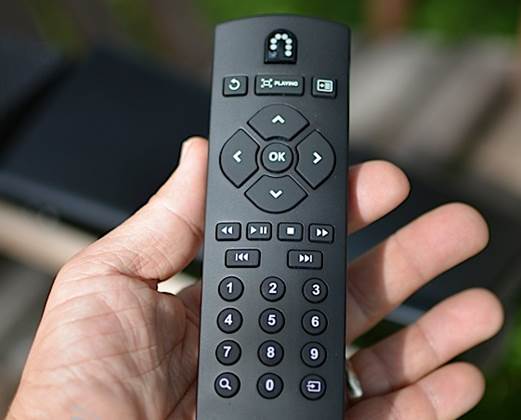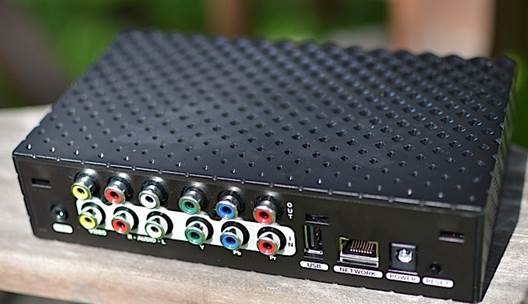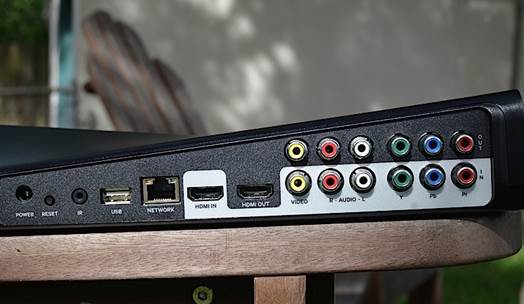A couple months ago, on October 2012,
Sling Media has released two new versions: the Slingbox 350 and 500 for $179
and $299. Both of these two devices have nice design and are not only
entertainment devices but also unique decorators for your living room.
It's hard to believe that the Slingbox has
been on the market for 7 years, but that just makes it harder to accept that these
are the first retail models released since 2008. However, that finally changes
today: Sling Media has just introduced two new products: the Slingbox 500 and
350. Being available on 14/10 for $299 and $179, these new set-top boxes
replace the Solo and Pro-HD. While the 350 model only plus 1080p streaming
capabilities at the same price, the 500 model adds SlingProjector, a feature that
allows you to take pictures stored on your iOS or Android device and send them
to your television (video streaming will soon be supported). The Slingbox 500
will soon be able to play content on USB-attached storage, but that will come
in a future software update. The SlingPlayer apps get a refresh as well, adding
reminders and easier way to share with your friends the Slingbox. What we
define in this review - and what you will discover if you keep on reading – is
how big of an upgrade is. Is it worth throwing the old hardware for one of
these boxes? What if you're thinking of buying your first media streamer? We
will study all.

The
Slingbox 350 (above) and 500 (below)
Hardware
Whether you believe it or not, the new
Slingbox 350 is actually the first model from Sling Media that looks like a box.
The lightweight plastic device has a structure reminiscent of China’s Birds
Nest Olympic stadium, with a predictable array of connections on the backside.
Like the latest generation of Slingbox Solo, which the 350 replaces, the model
has Component HD inputs, an IR output and uses an external power supply. There
is also a composite analog video input, but the S-Video from the Solo is
disappearing – understandably so, as that standard has fallen out of favor. At
the front, there are small LED indicators including one for power, another for
network connectivity and finally Sling’s upside-down "U" that lets you
know when someone is using it. The most noticeable differences here, compared
to the Solo, are the addition of a built-in IR blaster and the ability to actually
stream in HD - while the Solo had HD inputs, it down-converted to standard
definition before encoding the.

Slingbox
350 is the first model from Sling Media that looks like a box
Conversely, the Slingbox 500 is not a box,
but rather, some amorphous shape we are pretty sure we never covered in high
school geometry. Apart from the fact that you cannot put anything on top of it,
we like the way it looks, even though the plastic is very slantwise to
gathering fingerprints. The choice of input and output is similar to what you will
find on the 350, with the biggest difference being that the LED lights actually
dance around a bit while it is streaming video. In addition, the 500 model adds
an HDMI input and output to the mix – now, they are not very useful, but more
useful later. Well, there is one thing that might be of interest to those who
live in homes that are not well wired. The Slingbox 500 features integrated
WiFi of the 802.11a/b/g/n, 2.4/5GHz version – something that, honestly, the 350
model supposed to be having. However, another feature you might miss from the
last-generation Pro-HD is the internal tuner. We were not really sad about the
lack of S-Video interface, but we do regret about not being able to watch HD
via ATSC or QAM, as on the previous model.

The
500 model with its amorphous shape looks unique
The last thing: the 500 model actually
comes with a remote. That’s right, the Slingbox is no longer just a
place-shifter, you can use the remote to access content on the television to
which the Slingbox is connected. The remote is small with just a few essential buttons,
and does not include controls for the television’s volume or power. In brief,
the box is going to be upgraded to provide access to content stored on a USB-attached
drive, as well as content from other sources such as Netflix or Hulu. However, for
now, it can use the new Sling Projector feature to view photos from iOS or
Android devices, but we know SlingProjector will be expanded to include video
in the coming weeks. The bottom line is that the remote is mainly used during
the optional TV-based setup (not optional if you choose to use Wi-Fi), but
there is a lot of potential here.

Slingbox
500 comes with a remote
Setup
Like most previous Slingboxes, the 350 and
500 model perform a man-in-the-middle attack on your content. You unplug your
set-top box, or any other video source, from your television and plug it into
the Slingbox. From there, you connect the Slingbox’s outputs to your television.
Since the 350 and 500 have an integrated IR blaster, it can easily control your
source without any additional wires or connection, as long as the two are close
to each other. If you want to separate them, you can use the integrated IR
blaster by plugging it into the back of the Slingbox and attaching the emitter
to the front of your source. The actual configuration, done via a web
application by navigating to a URL, is pretty simple. The 500 model provides optional
on-screen setup using the included remote, but as we said earlier, it is really
necessary if you intend to use WiFi. Since the Slingbox works from inside or
outside your home network, you have to open some ports on your firewall. If you
have UPnP enabled on your router, which is typically a bad idea in terms of
security, the wizard will automatically do what needs to be done - both worked
without a problem in our testing. The only thing left is setting your source,
location and provider.

Slingbox
350’s connectors
The success of HDMI in the theater is
indisputable, but if you want to use the Slingbox, you had better not be
opposed to the old red, green and blue. The quick-start guide for the 500 recommends
connecting both HDMI and component video for good reason. We first tested with
a TiVo Premiere and it is completely refused to stream video at all via HDMI
thanks to HDCP. To be fair, we know this is not the fault of Sling Media, but
from a practical standpoint, the HDMI input on the Slingbox 500 is almost
useless. The HDMI output, on the other hand, can be used to display content in
1080p from sources in the future; but right now, it's not very useful. The good
news is that most set-top boxes do not have a problem outputting HD via
component and HDMI at the same time, but because the component video
specification doesn’t support 1080p, officially, the Slingbox has to convert
1080i to 1080p for streaming.

Slingbox
500 with several of connectors